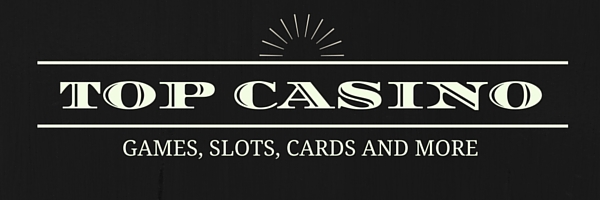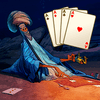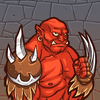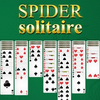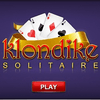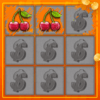The Moon Is Not For Sale by Wallace Provost – Book Review
Latest Casino News TopCasinoGames.eu 13 Jun , 2017 0
Land, Society and How Things Could Be
Annabelle Taylor (Annie) and Clint Baker are thrown together in the middle of an asteroid shower on the Moon. Lunar City, for the moment, is in chaos, offering only very cramped, bored and squalid conditions until the next shuttle arrives in two weeks time. Annie is only a temporary worker on the Moon having gone there to pick up easy credits for her law degree, but Clint is a "Luney", that is, he was born on the moon. Clint decides it is best to take Annie with him to his family home, Moondogy Ranch, which is a few days drive away by very rough road. The ranch is located in a huge cavern, which is sealed off from the outside to protect it against the solar radiation and the extremes of temperature. Annie feels stirrings of emotion for Clint, but her plans for her life do not include being a farmer's wife, much less one who lives on the Moon. Annie is a Cherokee Indian and very much intends to become a lawyer so she can advance the standing of her people. What direction will Annie's life take, and indeed what direction will events in the pioneer Looney civilization take?
The Moon Is Not For Sale is Wallace Provost's first novel and is a very amiable book, full of adventure. It is written in the hard science style, which is to say it is based on science fact, current science theory and logical projections from today's widely held science concepts. Provost holds a Masters Degree in the philosophy of science, and a second Masters in sociology. Not surprisingly the novel also contains speculations about the nature of society and the possibilities of future societies. At its heart this is a book for those who like to imagine and dream, and for those who like people.
Provost's novel is very much about frontier life on the Moon and suitably the style has a hint of the back-woods, fire-side tale. The voice is very chatty and we feel we are listening to our uncle or grandmother tell us about people he knows. Each new character, for example, is introduced by a short yarn which reveals something of their history and personality. This helps to make the book warm and friendly and we immediately feel at home. Along the way there are several surprise endings which spur us to read on. There are occasional moments of real irony, such as the "jungle drum music" (p. 153) in Chapter 18, where patrons of the "Haven of Evil" lasciviously prepare to watch a truly gratuitous spectacle. This very much contrasts with the previous chapter in which Kwame Nkuomo, a Gahanna engineer, beats his jungle drum while remorsefully contemplating the terrible consequences of a failed project which he helped to initiate. The philosophical ethics of the first chapter bitingly contrasts with the degradation of the next.
This book has an unusual plot structure. The first half of the novel follows Annie as she rises in the world and has to deal with various complications, such as a possible romance with Clint and even a plot to kill her. In the second half of the book the plot diverges into various stories, many of which are centred on the development of the moon colony. We read of, for example, the establishment of a number of new settlements. In this second half there is still a plot line related to Annie, however, she does not take center stage. One criticism of Provost's book is that this second half is unnecessarily repetitive. There is, for example, a second attempt to kill Annie. In the first half Black Horse Jones, Cherokee Indian 'big man' and Annie's long standing enemy, is the individual who wants Annie dead. In the second half Injun Joe Bristow, also a Cherokee Indian 'big man', is the assassination schemer. Once again in the first half we read the story of the establishment of the city of Inyanga by dispossessed Zulus. In the second half of the book we read of the establishment of Helium City by Indians from the slums of Mumbai, and then again the story of the establishment of the village of Xi Hue by oppressed immigrants from Tibet. This is basically the same plot idea reproduced. Finally in the second half we read the three stories of Mike Riggs, Monty Wilson and Art Anderson, all of who are temporary immigrants to the moon and all of who meet and marry Indian 'Loneys' in Helium City. These stories come in so close proximacy that we can not help noticing the repetition. A related problem to this is that, without Annie taking center stage, there is less to tie the various plot developments together. As a result this second half of the book is too diffuse. This is not to say that the last half is totally boring: it is interesting but over extended. View as a whole the novel certainly works.
The characterization is one of the novels strongest points. Provost has a way of capturing people in a few words and making us feel that we understand them. Annie is outspoken and ambitious in a level headed, likable way and we are immediately on her side. Provost has also granted her a little mystery. We wonder why she feels the first trip to Moondogy Ranch is such a "trap." (Ch.4) The introductory character studies, which have already been stated, are certainly one of the highlights of the book. This is, however, very much a story about one person. Provost has given us a stage full of characters, but he does not really develop any of them except Annie. Even Clint is not depicted in any depth, or as growing in any way. The novel would have benefited from having just one more character explored in detail. I do not wish, though, to overstate this point. The Moon Is Not For Sale is quite readable and enjoyable.
Provosts novel is primarily action and adventure, but there is just a little symbolism. The asteroid shower in Chapter 1, for example, is a highly ironic symbol commenting on capitalist society. Lunar City's huge roulette wheel, which is a monument to the grad vision of the Moon's casino, is smashed to pieces. What was meant to last "forever" (Ch.7, p. 49) is in ruins. Provost is not at all liberal, heavy handed or obviously with this symbolism, so do not expect a gratuitously 'poetic' book, but just a little imagination is there if you look for it.
The Moon Is For Sale is about frontier life and the theme of individualism, ingenuity and free thinking is very prominent. This pioneer spirit existed in the US when it was first being explored and colonized, and also in Australia at a similar point in its history. When nothing exists to rely on individuals have to fall back on their own resources and ideas. As a result new types of society can emerge. Along similar lines the question of 'What is success?' Is examined in some detail. Our society says that money, property and social status mean success, but is that really so? Are not our own personal goals very important in defining us as a success, and are these necessarily the targets recommended by society? Provost's characterization of Annie very much delves into this theme of success. Friendship and pairing into couples also features strongly in the novel. What makes us happy and what helps us through life? Sure bonding is at least part of the answer. Bonding is a very basic human need and Provost depicts it both light-heartedly and also with a little philosophic depth.
As we have noted in the paragraph above, the book has a lot to do with society. On the Moon private ownership of land is banned. The Capitalist / Marxist debate therefore features strongly in the novel, although it should be noted that Provost is not in any way advocating totalitarian communism, which Marx himself would have been quite horrified by. (Gill Hands. Understanding Marx: Hodder Education, 2011, p. 79-83) As Hands writes: "The Soviet Union was ostensibly a Marxist-Leninist regime under ... [Stalin's] ... rule but this was nothing like the Society envisaged by Marx or Lenin. " (P. 83) Indeed in Provost's novel in Ch. 46 the Tibetans, who have lived under communist Chinese rule, find it very hard to believe that on the Moon business is run to very much benefit ordinary workers. (P.264-265) Provost notes, as Marx did, that Capitalism encourages an aggrandizing self-ambition almost like a fetish. (Hand, p. 46-49) In Chapter 7 Provost publications Fuller, the original owner of Lunar City casino, as exactly such a fetish driven man, and indeed there are quite a few examples of similar men in the book. The importance of power in Capitalism, as noted by Marx (Hand, Ch. 3 & p. 59), is also noted by Provost. In Chapter 9, 10 and 11` we read of Annie being wary of and avoiding 'men in black suits.' Marx, of course, observed that whole classes of people are enslaved by the few (Hand, p. 51-53), and indeed that whole nations can be oppressed by the Capitalist elite (Hand, p.44-46). As we have seen, the history of oppressed peoples such as the Zulu's and the Indian poor is highlighted. Most notably Provost explores in depth the Marxist point of the ownership of land and the resulting enslavement of people. (Provost. Ch.21, p. 165-166 for example, & Marxism Rius. Introducing Marx: Icon Books, 1999, p. 117-118) It should be noted, however, that Provost is not saying that the proto- Marxist society of the Moon is a seamless paradise. Unemployment is noted. (Ch. 37, p. 242) It is also noted that capitalist competition and land ownership are strong drivers of growth. (Ch. 42, p. 251-252)
From the perspective of post-colonialism the Moon Is Not For Sale is full of successful, educated and independent (self-empowered) characters from the 'third world.' From Africa alone we have Doctor Harim Mbeke from the University of Cape Town, his wife the astronomer Indira Mbeke, his daughter Niri Mbeke, who has a doctor in lunar geology and another in Earth geology, Doctor Magogo Betheluzi and the engineer Kwame Nkuomo. Provost makes a special point of noticing the oppressed state of the Zulus and their need for freedom (Ch. 40, p. 247). In one interesting passage (Ch. 23, p. 178) Provost notes that originally nomad people had no need for the ownership of land. 'Indigenous' people, for him, have a wisdom from which we as 'advanced' society may be able to benefit. As the plot progresses there are also a number of successful East / West relations as 'ordinary' workers meet and mix on the Moon. (Ch.33, 36, 38) There is no bigoted fear of 'mixed marriages' here. As with Marxism though, here too the picture is not patronizing ideal. The Ecuadorian owners of the unprofitable Titanium mine on the Moon decide to simply shut down the operation, abandoning the workers to die of starvation or thirst in isolation. Obviously those in the third world are not all model characters.
Indigenous North American Indians play a special role in the novel, but here once again Provost takes a balanced approach. There are two Cherokee lawyers, Annie and her uncle Bradley Hays, but there are also the two previously mentioned Cherokee villains, Jones and Joe. Provost does, however, take a mainly positive approach. From this positive perspective Cherokees are listed as having skills of value. One Cherokee character, an old woman living a traditional life in the woods, is depicted as having very keen, almost intuitive observation skills, much more than a white Westerner would. (P.72-73) The bigotry which North American Indians face is also published. In one very telling scene Mina and Robert Lowrey discussed with moral indignation the "Haven of Evil" which the new Cherokee owners of the Lunar City casino have set up, completely disregarding the "snuggle tunnel" which the previous white owners provided for their customers.
The gay characters Evan Williams and Ralph Burns make brief positive appearances (Ch. 8, p 58-62), as do the lesbian characters Glenda Trilling and Marsha Mayberry. (Ch. 50)
The disabled character George Morgan works as a successful short order cook in a bar and grill he owns with his partner. (Ch. 39, p. 242-245)
Provost has made a special effort to portray women positively and the plot has many intelligent working women. Antonia Vilafiana, for example, is Mayor of Lunar City at the age of just 22 years. In Chapter 51 (p.289) female contestants in the first "Pan Lunar Games" take a star roll defeat male contestants.
Provost's novel is primarily an adventure story; However, there is psychological accuracy in the tale. For example Provost has a number of characters fall in love during the first few days of their stay on the Moon. (Ch.33 & 36) Robert Epstein, in his article How Science Can Help You Fall in Love (Scientific American Mind, Jan / Feb 2010, p. 29 & 33) points out that people become more attached to each other in moments of Crisis / vulnerability / change.
Wallace Provost's The Moon Is Not For Sale is a novel that is both exciting and interesting. The story bounds along, full of excitement, but also has moments that make us think about the society in which we live. Provost shows a sufficient balanced approach to many of the issues he raises, such as the Marxist / Capitalist debate, the depiction of 'third world' people and the portrayal of North American Indians. Women, LGBTI and the disabled are represented positively. The novel is not without its shortcomings. The second half is a bit too diffuse, needing some central character or main plot to pull it together. That part of the book, however, is certainly not a complete failure: it is interesting and entertaining. All in all I am happy to give this book a four out of five star rating.
[ad_2]
Source by Raymond N Mathiesen
